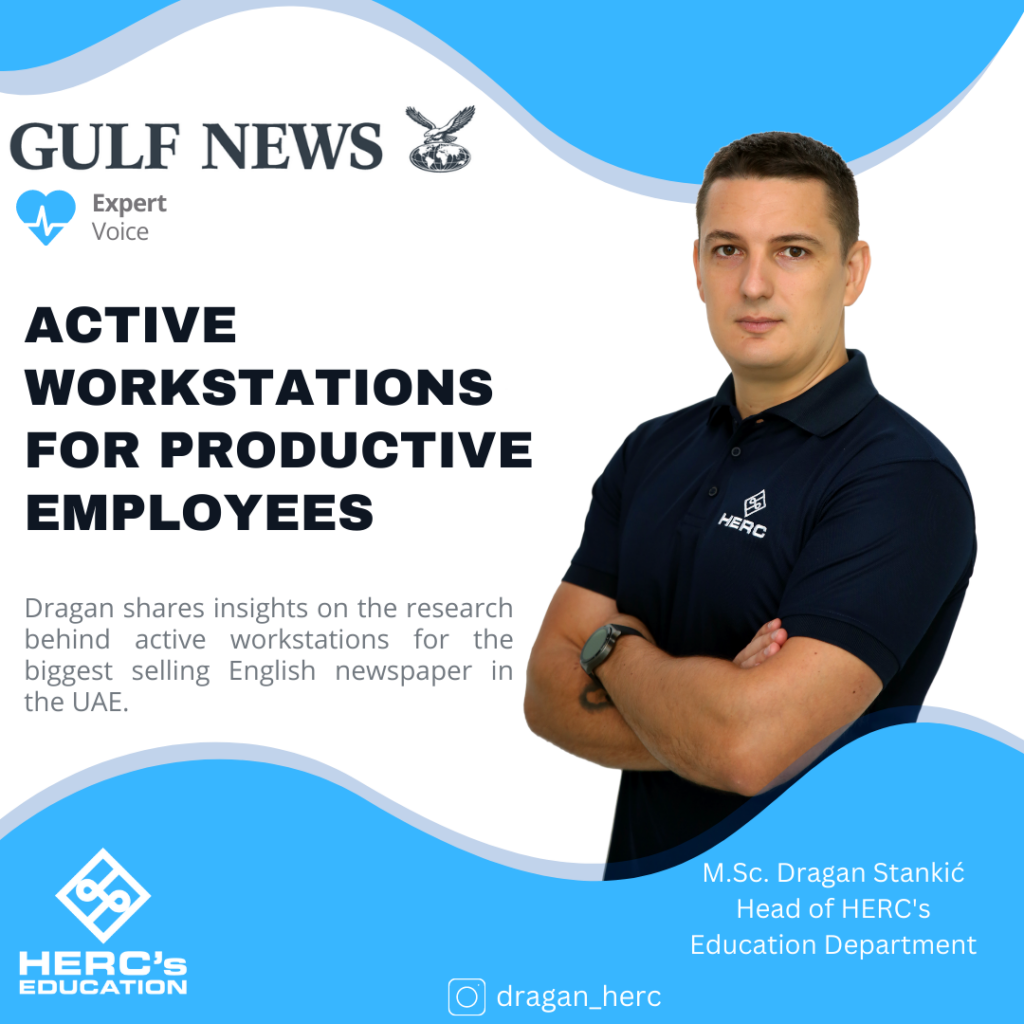
ACTIVE WORKSTATIONS FOR PRODUCTIVE EMPLOYEES
Recently we’ve been approached for an interview by Gulf News on the exciting subject of how to make long working hours less sedentary.
Our Head of Education Department, Dragan Stankić, answered the series of questions regarding the different types of active workstations such as under-table treadmills, etc. The article’s final version contains much commercial information like the best pads for purchase, pros, and cons, how it’s related to health, etc. Since most of Dragan’s contribution to the interview dealt with the science behind active workstations, it was not included in the final version because it was considered too complex for everyday readers. You can read the whole article of Gulf News by clicking HERE.

Head of HERC’s Education Department
For those interested in learning more about this topic, read below.
A Brief Review of Under-desk Treadmills
A significant body of evidence shows that prolonged sedentary behavior negatively affects cardiometabolic risk markers. The most common sedentary behavior among office-based workers and students is spending long hours in the libraries behind the desk. It took quite some time for business owners and office managers to realize that increasing physical activity at work can increase workers’ productivity and improve their health parameters, which directly decreases “off work” days due to illness.
Back in 2018, Champion and colleagues published a study that showed treadmill desk acutely improves cardiometabolic risk markers in both genders by reducing prolonged sedentary time. The idea that continuous sitting should be interrupted by easy walking on a treadmill desk at the speed of a maximum of 3.5 km/h while still working was an excellent countermeasure to sedentary behavior. Then, at the end of the working day, workers would gather around two hours of active moving time while still having full working hours.
The total amount of daily steps and daily energy expenditure are well-established indicators of one’s activity.
Koepp and colleagues published a scientific paper in Frontiers in Physiology, proving that an “under-the-table apparatus” can increase total daily energy expenditure by 20% when compared to the standard office desk and chair setup.
The next logical question could be: Can this kind of activity negatively affect concentration on tasks and impair work-related performance? For example, solving math equations requires different concentration than reading or writing.
The paper published in the Journal of Physical Activity and Health by John and colleagues gave some answers by comparing the effects of seated and walking conditions on motor skills and cognitive function tests. Compared with seated conditions, treadmill walking caused a 6 to 11% decrease in measuring fine motor skills (ex., Dialing the phone) and math problem-solving but did not affect selective attention and processing speed or reading comprehension.
In conclusion, apparatus like under-table treadmills could be a potential solution for many businesses looking to improve their employees’ productivity and reduce absence from work caused by illness by preventing diseases associated with sedentary behavior. We always recommend consulting professionals from the physical activity and fitness domain who can manage the process of implementing active workstations tailored to business needs and their possibilities.
Prepared by:
HERC Admin Team

